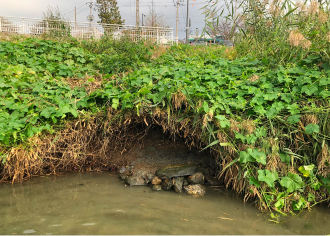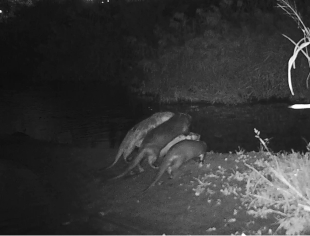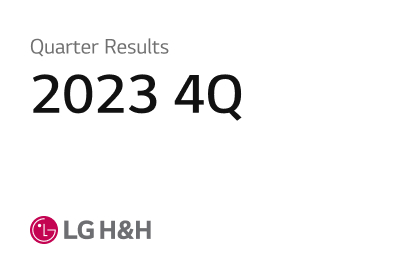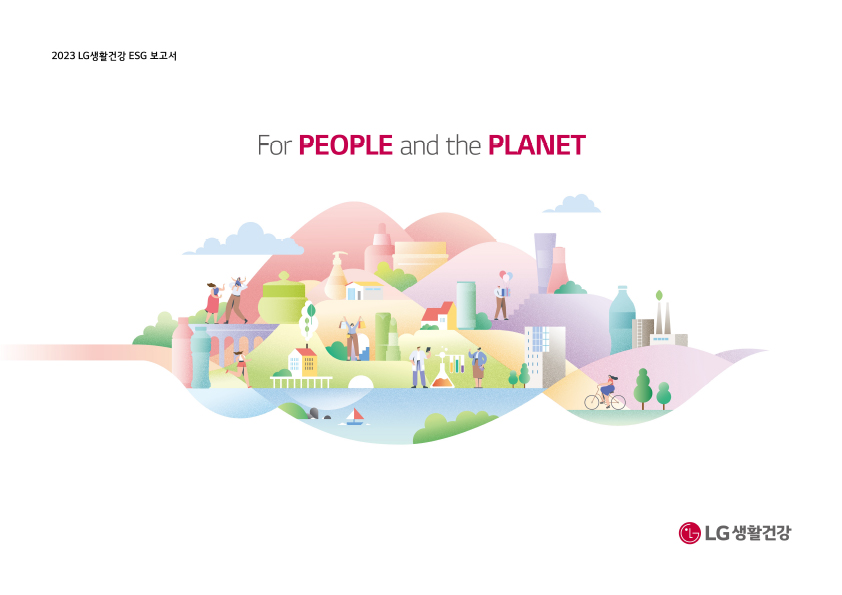Press Release
Climate change response
Biodiversity Approach Framework
Biodiversity Protection and
Deforestation Prevention Policy
LG H&H actively supports global ecosystem and deforestation prevention efforts in the era of the climate crisis and has established the ‘Biodiversity Protection and Deforestation Prevention Policy’.
LG H&H does not conduct production activities near ‘biodiversity protection areas’ to preserve the surrounding areas’ biodiversity, including business sites and local communities.
We also conduct environmental impact assessments under relevant laws and regulations in the areas of natural ecological environment,
atmospheric environment, water environment, and soil environment to track changes in the ecological environment and implement conservation activities.
In addition, we will continue to promote projects based on the principles of the UN Forest Initiative to Prevent Deforestation and
minimize negative environmental impacts through communication, education, and investment with relevant stakeholders.
LG H&H reports its environmental risk reduction activities, including biodiversity and deforestation prevention activities,
to the ESG Committee of the BOD and transparently discloses them through the ESG Report.
-
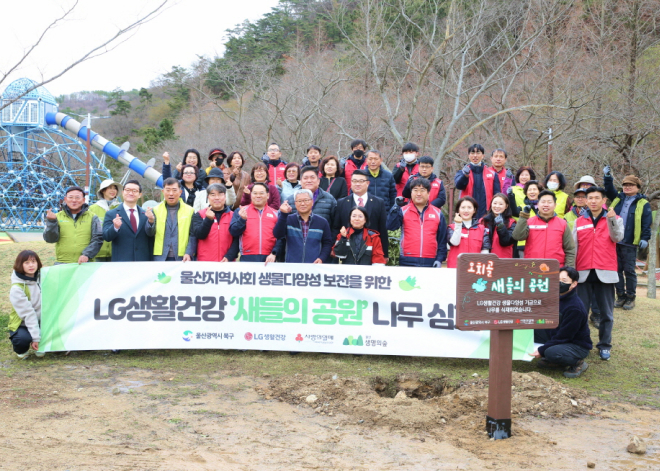 Planting Event at Ulsan Bird Park
Planting Event at Ulsan Bird Park
Biodiversity Risk Management Process
We developed our biodiversity risk management process with reference to global assessment methodologies and frameworks,
including the Taskforce on Nature-related Financial Disclosures(TNFD) guidelines and the Locate Evaluate Assess Prepare(LEAP) approach.
We are operating it integrated into our Crisis & Risk Management process.
When assessing biodiversity risks, we consider and identify the full range of biodiversity risks related to dependencies and impacts and
include various areas in the scope of the assessment, including not only our own business sites but also areas adjacent to our business sites, upstream and downstream.
-
STEP 01
 Business Location/
Business Location/
Value Chain Analysis -
STEP 02
 Dependency and
Dependency and
influence measurement -
STEP 03
 Establishment, implementation, and
Establishment, implementation, and
disclosure of mitigation plans
Biodiversity Risk Areas
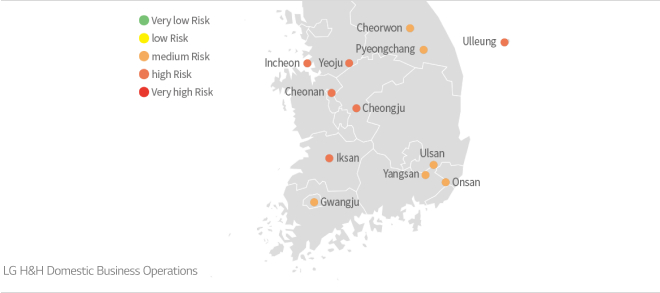 Source: W WF(World Wide Fund For Nature) Biodiversity Risk Filter 100
Source: W WF(World Wide Fund For Nature) Biodiversity Risk Filter 100
Biodiversity Risk Assessment
(based on domestic business sites)
| Classification | Number of Business sites(pcs) |
Area(㎡) |
|---|---|---|
| Business sites | 18 | 1,849,635 |
| Assessments conducted | 3 | 154,018 |
| Percentage of assessed workplaces compared to total workplaces(%) |
8.3 | |
| Identification of risk exposure | 1 | 21,744 |
| Establishment and implementation of management plans |
1 | 21,744 |
| Percentage of sites with management plans developed and implemented(%) |
100 |
** Wildlife Reserves: Wolleung Spring Water business site / Ecological landscape conservation area: N/A
Biodiversity Risk Assessment by Business Site (By Corporation, By Type)
| Corporation | Total | Production | Logistics | Research |
|---|---|---|---|---|
| LG H&H | 6 | 5 | 1 | 0 |
| Coca-Cola Beverage | 3 | 3 | 0 | 0 |
| HAITAI HTB | 5 | 5 | 0 | 0 |
| Tai Guk Pharm | 2 | 2 | 0 | 0 |
| Hankook Beverage | 1 | 1 | 0 | 0 |
| FMG | 1 | 1 | 0 | 0 |
| Total | 18 | 17 | 1 | 0 |
Biodiversity value conservation activities
Creating Parks for
Urban Ecosystems
Global warming has led to a decline in 40% of the world's 10,000 bird species, and predictions indicate that 40% of insects could become extinct within a few decades. This underscores the importance of securing biodiversity to preserve habitats. Bees, which play a crucial role in pollinating crops, are so vital that their extinction could lead to human extinction within four years. Recognizing this, LG H&H undertakes various support activities across its nationwide business sites to restore and conserve biodiversity. Specifically, the company plants a variety of flowering and fruit-bearing plants in urban areas to provide food sources for birds and insects, helping them thrive. Since 2022, in collaboration with the local group Ulsan Forest for Life and local governments, LG H&H has established Bird Park and Bee Park in Ulsan. In 2023, they planted 1,400 trees in Ulsan's Ochigol Park, creating spaces where children can experience nature while playing. Moving forward, LG H&H plans to develop urban forests that absorb carbon and reduce fine dust, contributing to the creation of eco-friendly cities where nature and people coexist.
Protecting the endangered ‘Han River Otter’
LG H&H is actively involved in protecting the habitat of otters, a critically endangered species and Natural Monument No. 330, to preserve the natural ecosystem and biodiversity around the Han River. In collaboration with the environmental organization Social Cooperative Han River, LG H&H has been building infrastructure, including otter playgrounds, in Yeouido Saetgang Ecological Park and Jungnangcheon in central Seoul, the first tributary of the Han River, since 2022. Jungnangcheon, a primary tributary of the Han River, has extensive riverbanks and dense reed beds, making it a high-density habitat for otters. Building infrastructure here is expected to be highly effective for habitat protection. In 2024, we will support the campaign to designate Jungnangcheon as an 'Otter Protection Area.' We have created otter shelters along Jungnangcheon and secured stable habitats for otters in urban areas. We plan to support activities that propose the designation of Jungnangcheon as an otter protection area to the government and local authorities. LG H&H will continue to create otter habitats and expand activities that highlight the ecological importance and environmental value of otters, including running otter exploration programs for children and teenagers.
Developing native plant resources
Terrestrial biodiversity, including the habitat and species richness of Korea’s native plants, is expected to continue declining due to artificial interference, such as using forests for other purposes and climate change. In response, LG H&H continues to carry out various activities to conserve and develop Korea’s native plants following the Nagoya Protocol to restore biodiversity and ecosystem functions. We categorize our activities into three areas: conservation, restoration, and expansion, where we secure resource specimens, extract libraries, video footage, and research to develop differentiated efficacy, concepts, and materials for our products. We operate our own native plant gardens in Cheongju and Ulleungdo. In 2023, we signed a contract with local farmers in Ulleungdo and Sejong City to cultivate a total of 11 types of native plants, including Jeonho, water thistle, Golden Rod, Lythrum salicaria, Inula japonica, Alfalfa, day lily, Milk Thistle, Potentilla chinensis, Caragana sinica, Vietnamese balm. In addition, we completed the launch of the “Beyond Phytoacua” line, which incorporates Inula japonica and Lythrum salicaria grown in Ulleungdo. The development of native plant resources contributes to creating sustainable communities and improving farmers’ incomes through contract cultivation with local farmers while creating social value by restoring ecosystem functions and securing product competitiveness. LG H&H plans to collect and multiply about 500species of native plants by 2028. We will also expand the number of national organizations with which we have signed business agreements from four to six and build genetic information on 200 species. Going forward, we will continue to conduct plant diversity surveys and monitor and expand various biodiversity activities, such as expanding local conservation, restoring and enhancing damaged forest ecosystems, and promoting the utilization of plant resources.
Native Plant Cultivation Status
| Category | Outdoor cultivation area(㎡) | Greenhouse area(㎡) | Number of species | Population size |
|---|---|---|---|---|
| Cheongju Garden (relocated from Cheonan in June 2022) |
4,950 (1,497pyeong) |
870 (263pyeong) |
330 | 32,000 |
| Ulleungnari Contract Farming |
6,600 (1,996pyeong) |
- | 15 | 15,000 |
MOU Status
| NATIONAL INSTITUTE OF BIOLOGICAL RESOURCES | Korea National Arboretum | Korea Arboreta And Gardens Institute1) | Ulleung County | Chungcheongbukdo Forest Environment Research Institute2) |
|---|---|---|---|---|
|
1) National institute specializing in plants and the parent organization of the National Baekdu Daegan Arboretum, National Sejong Arboretum, and National Korean Native Botanical Garden. 2) Signed in May 2023 * New material review species: Gardenia, Korean thistle, Asiatic lily, Rosa rugosa |
||||
